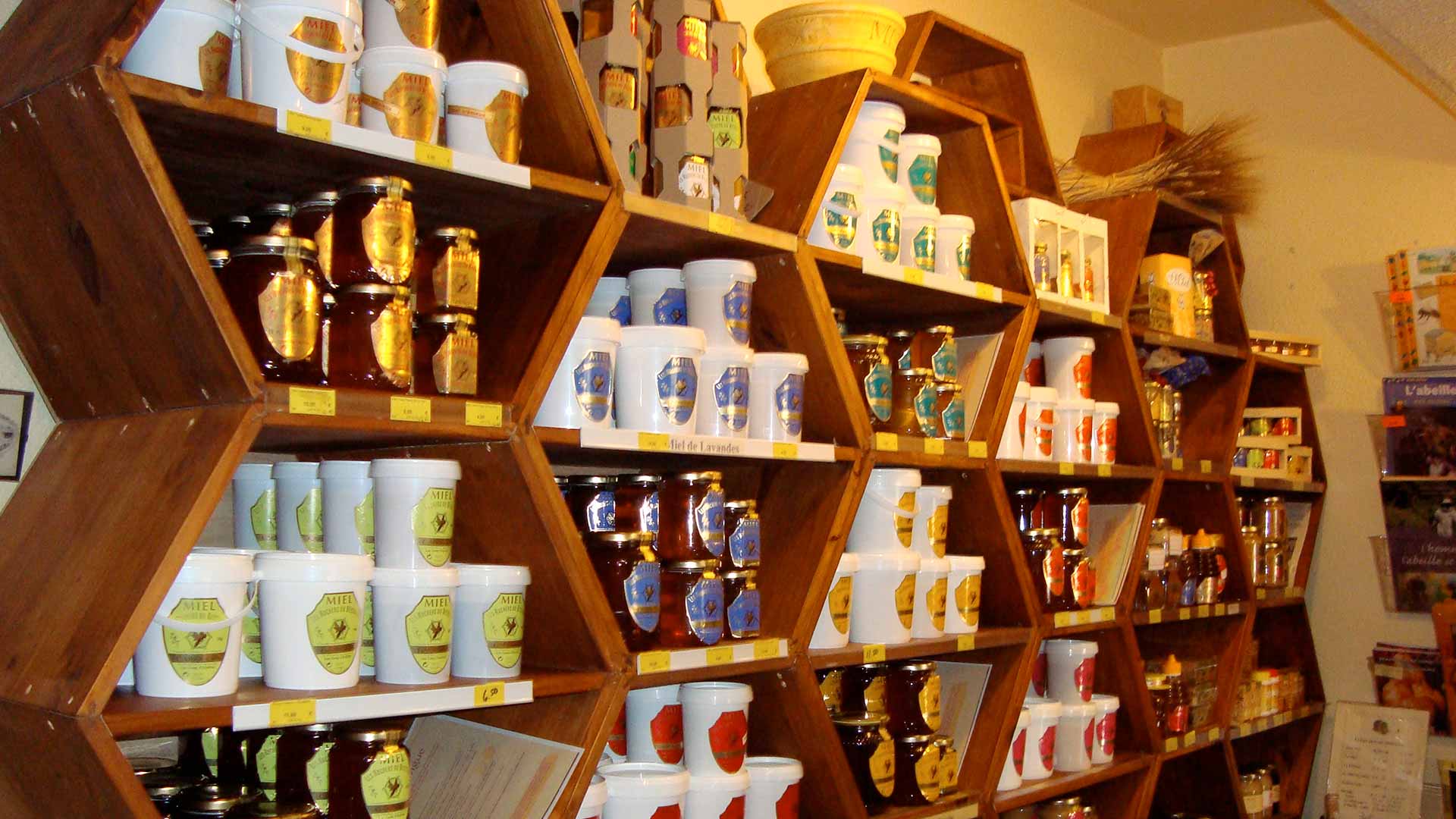
from plate to health
In Provence Verte & Verdon honey is abundant, as it is all around the Mediterranean. Honey has always been found both in the kitchen and in medicine, but is also the basis of a number of beauty treatments. We help you discover all these different facets.
WHAT IS HONEY?
Young or old, everyone the world over loves this sweet nectar, which suits all tastes and desires. But do you know where this golden liquid we enjoy eating with our fingers comes from? As everyone knows, a hive is a monarchical society organized around a queen. The hive has hundreds of bees, each with a very special task.
The worker bees are the ones responsible for feeding the hive. They fly off to find nectar-bearing flowers. They land directly on the flower, push the petals apart, plunge their head inside, extend their proboscis (their tongue) and suck up the nectar - the sweet liquid produced by the flower. They then return to the hive where there is no time to lose. During the journey the honey production process starts in the bee's crop. A chemical reaction - the hydrolysis of sucrose - takes place thanks to an enzyme the bees produce called invertase. The sucrose is broken down into glucose and fructose. Arriving in the hive, the bee regurgitates the nectar it has collected into the mouth of a recipient who will regurgitate and re-ingest it a number of time in order to mix in its saliva and digestive juices and complete the honey transformation process.
Once completed, the honey is stored in honeycombs and dehydrated by a long and energetic fanning process, carried out by the fanning worker bees. Once mature, honey can be stored for a very long time. So, to sum up for those who have not been curious enough to read the above: honey is more or less bee vomit!
HONEY, BEES AND HUMANS: THE STORY GOES BACK TO THE DAWN OF TIME

The oldest beeswax remains were found in South Africa. Proof, if proof were needed, that bees have fed humans since the dawn of time or that humans have always fed and cured themselves thanks to bees. At first humans drove bees away. In fact, it was called a nest because the honey was stolen from the bees at nightfall. Gradually, humans got to know more about this society; they deciphered and observed it before finally domesticating it. Moveable nests were then created – now known as beehives. Depending on the country and the era, they are made of rushes or wood. Humans were then able to produce different varieties and grades of honey. But with the use of beehives it was also possible to collect the wax, royal jelly, propolis and bee pollen. According to some researchers, humans owe their development and intelligence to honey. Unfiltered, it may contain bee larvae, and is very rich in proteins and fat, which are important for brain development.
Initially a condiment and food in ancient times, it is used as a cosmetic and also as a medicine, especially to help heal wounds.
HONEY, THE OLDEST OF MEDICINES
Honey has been held in high esteem by doctors for a very long time. It was used during the two World Wars to speed wound healing. Today, more and more hospitals use honey.
TIPS FOR TREATING MINOR WOUNDS WITH HONEY
You must buy REAL honey from the producer, and preferably organic, to ensure it does not contain any chemical substances. It should be stored away from light and heat (between 14 and 20°C) and of course, to ensure it retains all its properties, don’t use it past the expiry date.
Ideally, choose thyme or lavender honey for their antibacterial properties.
Do not apply honey to all wounds. Only scratches, minor superficial wounds (which cannot become infected), chapped skin and burns.
Wash your hands before starting.
Wash the wound with saline solution.
Cover the wound with a thin layer of honey with a spatula. It may sting for a few moments.
Cover with sterile gauze, closing the dressing carefully with adhesive tape.
Repeat the dressing every 12 hours in the same way until the wound is completely healed.